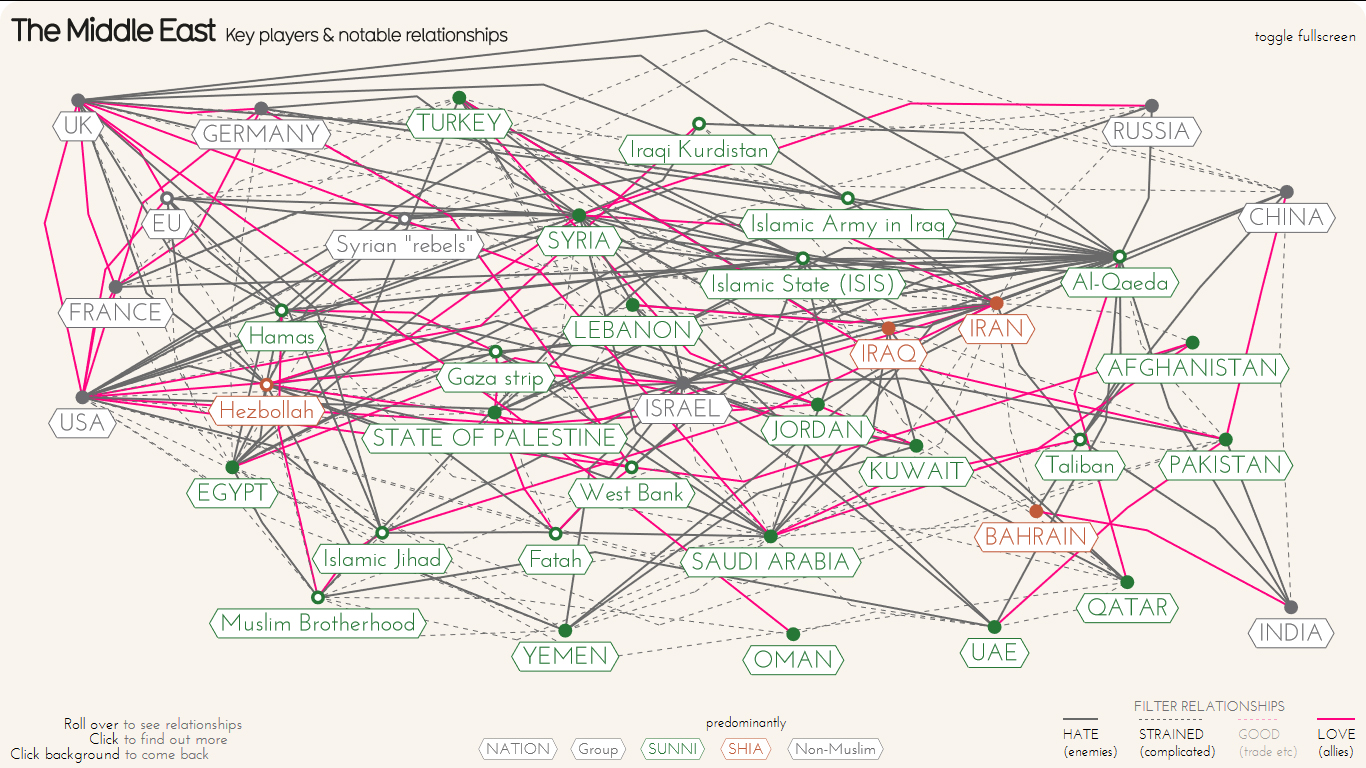Allies and Enemies
Recently in class, in discussing balanced graphs, one of the examples that we chose was about allies and enemies in the world. Enemies would be represented through (-) labels on the edge while allies would be represented with (+) on the edges. This reminded me of the quote “We have no lasting friends, no lasting enemies, only lasting interests.” famously attributed to Winston Churchill. This is perhaps the most true in the realm of international politics. Yes we can have a graph be a model of the relation between countries, but with every change in foreign or domestic policy, the graph will change. As we’ve only looked at static graphs, I think it’d be extremely interesting to look at dynamic graphs that show the evolution of relationships between nodes.
One of the more interesting foreign policy moves recently has been the Iran nuclear deal. (http://www.nytimes.com/2015/07/15/world/middleeast/iran-nuclear-deal-us.html)
The basic premise is that Iran will put a hold on it’s nuclear production abilities in exchange for lifting economic sanctions that other countries have imposed. As US has been historically a supporter or Israel, one of Iran’s greatest rivals, this foreign policy move by the US has dramatically changed the relation between these three nodes. However, this isn’t just limited to 3 nodes, but rather has ripple effect across the global network of countries and alliances. It would be interesting to note whether or not this decision has caused balanced nodes to become unbalanced or vice versa.
Based on the graph below we can already see the complexity of the relations in the middle east, a single move can cause shifts all along the graph.

If we were able to capture the dynamic changes associated with such a world graph, we can note correlations between foreign policy moves and shifts in alliances. Retrospectively, we could analyze how causing a certain part of the graph to be unbalanced may have caused a certain war. Perhaps more powerfully, a graph such as this could predict where instability or problems might occur.
